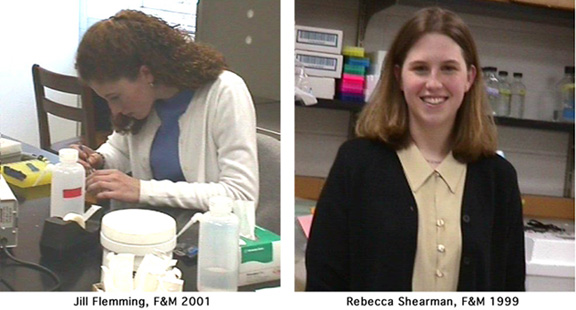|
|
|

Many organs
develop through inductive interactions between adjacent
tissue layers mediated by signaling molecules including
sonic hedgehog (SHH) and members of the fibroblast growth
factor (FGF) family. SHH and FGFs have been shown to be
involved in a feedback loop during limb development
(Niswander et al., 1994, Nature 371:609). As shh and
fgfsare often
expressed in adjacent tissue layers, such a signaling loop
may be a general feature of organogenesis. Exposure of chick
embryos to cyclopamine (a steriodal alkaloid) inhibits the
response of target cells to SHH signaling, and induces
craniofacial malformations including fusion of optic
vesicles, nasal placodes, and maxillary and mandibular
arches (Cooper et al., 1998, Science 280:1603). To determine
if these malformations result from loss of inductive
signals, we treated chick embryos with cyclopamine and
looked for changes in gene expression. Primitive
streak-stage embryos were treated with 5 mg of cyclopamine
for 3 days, fixed and subjected to in situ
hybidization. Cyclopamine treatment results in a marked
reduction of
fgf8expression in the
branchial arches and frontonasal process, and of
shhin the frontonasal
process, nasal placodes and branchial arches. This suggests
that SHH signaling is required for the initiation or
mantenance of
fgf8epression, and
FGF8 signaling in turn is required to maintain
shhexpression during
craniofacial development.
|
|